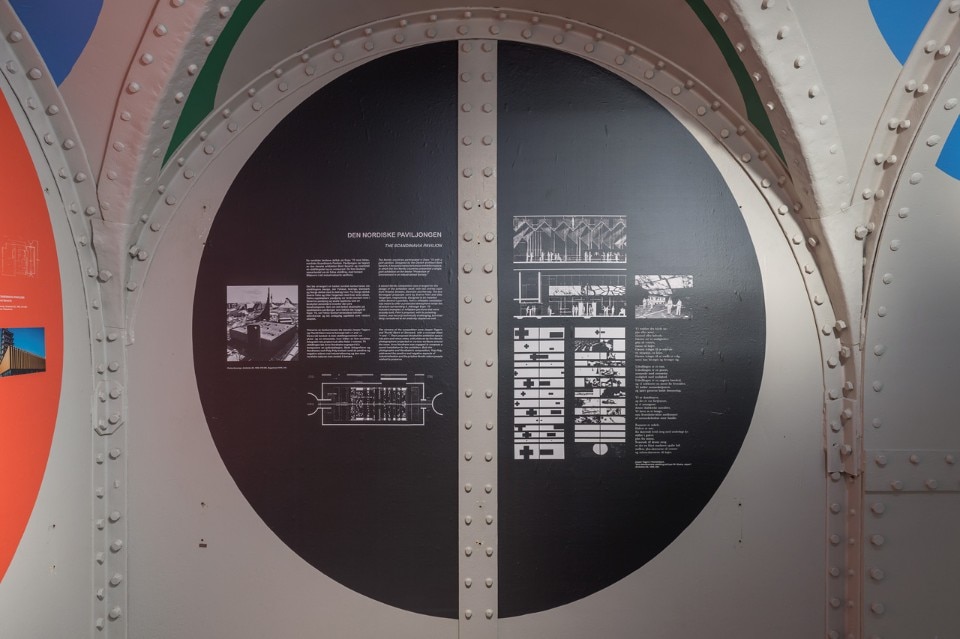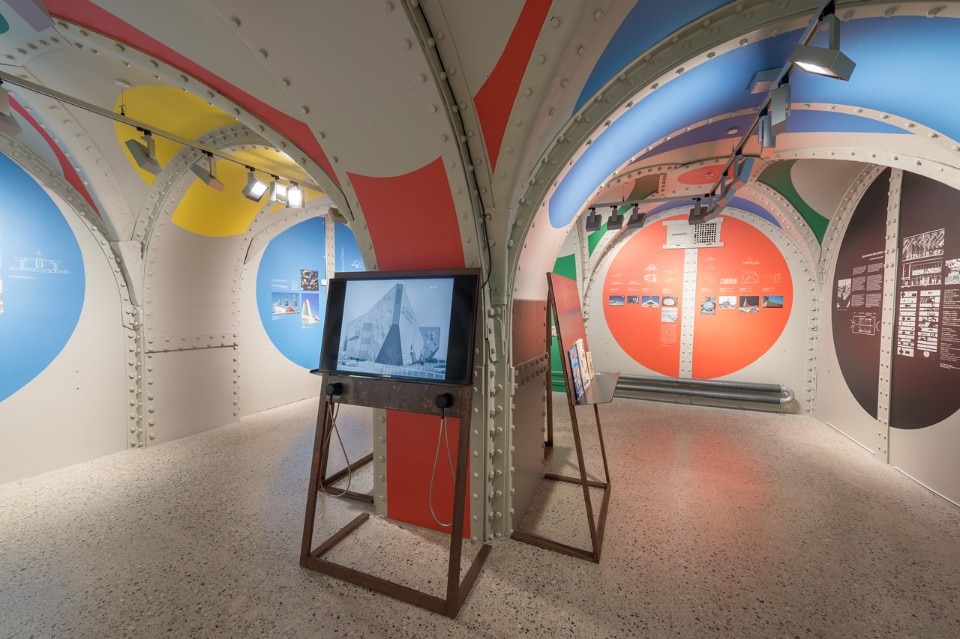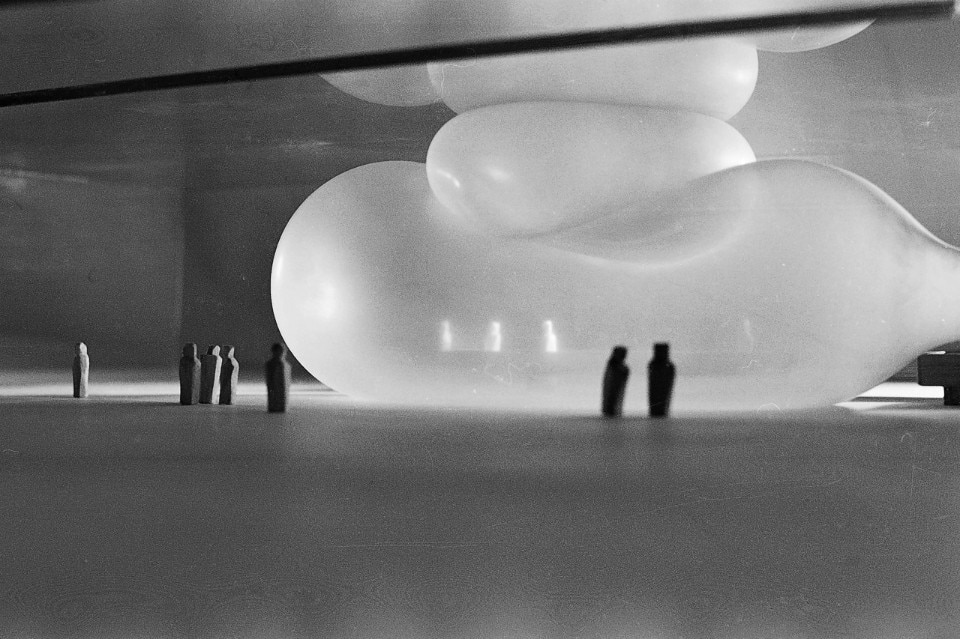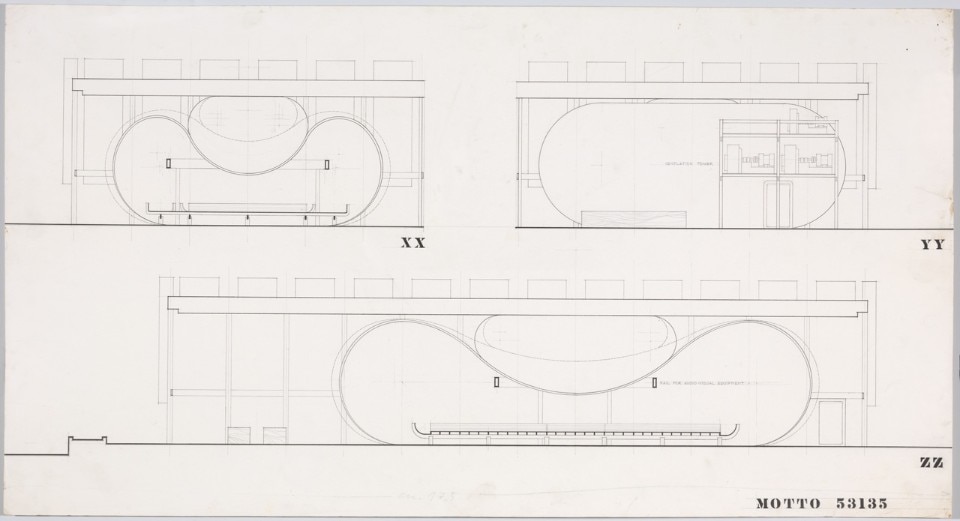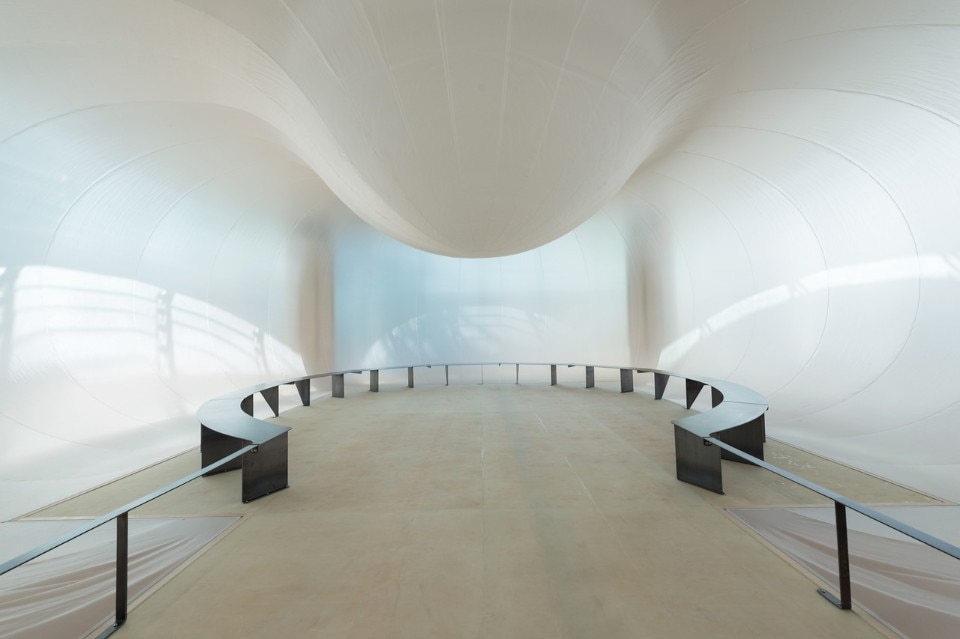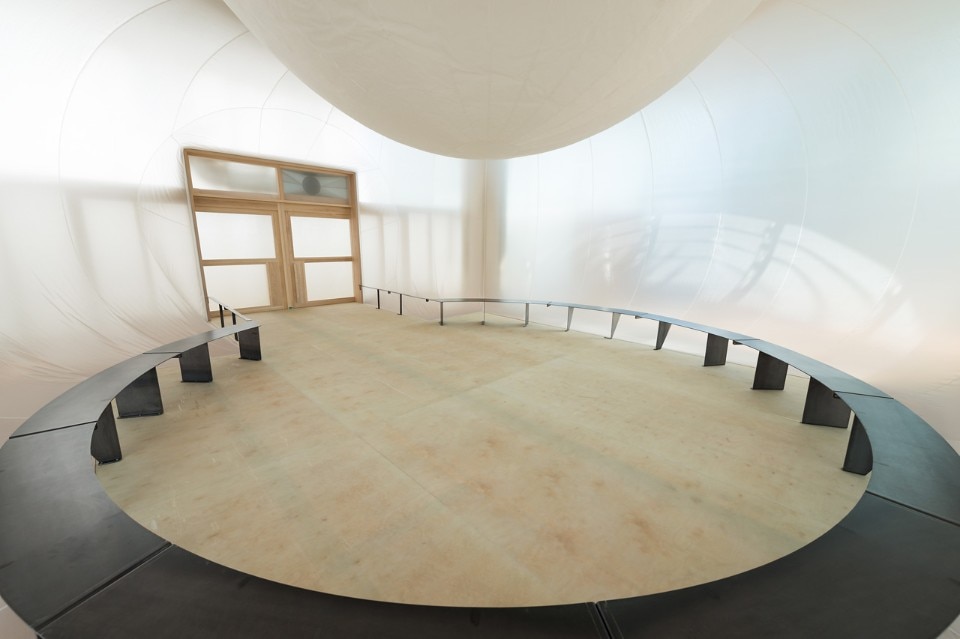
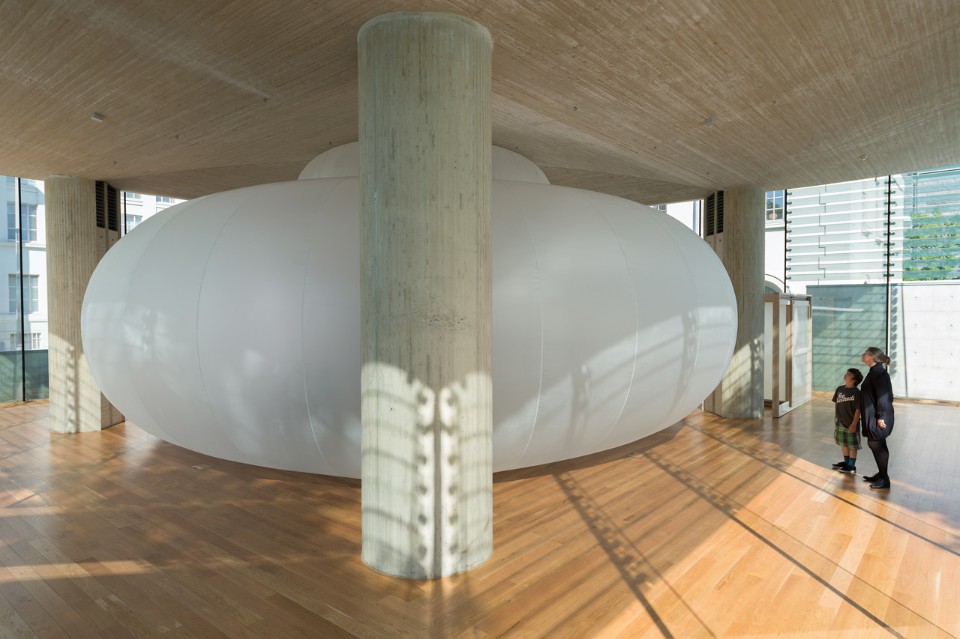
The exhibition had the futuristic title “Progress and Harmony for Mankind” and featured a gigantic and almost immaterial vaulted US Pavilion, a feat of engineering by Davis-Brody. It sought to imagine the near future in terms of never-ending development with highly technical trajectories. With 64 million visitors in its six-month duration, it was Asia’s first great World’s Fair, developed to a plan by Kenzo Tange and with a number of architectural creations built as accolades to the infinite potential of development.
The most striking thing about the documentation on that Fair displayed in this exhibition is the way it contrasts with this minimal analogical and functioning reconstruction of Sverre Fehn’s work.
